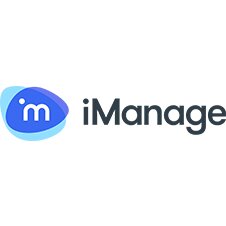Industry interview with iManage: Learning to leverage
This article was originally featured as an industry interview in the March issue of Briefing. To read the issue in full, download Briefing.
Delivering effective legal services to clients relies heavily on successful collaboration. Businesses thrive on it and it’s important that it exists in many places, even between a firm and a vendor that provides digital collaborative capability. iManage knows this well – priding itself on “building products from the ground up,” says CEO Neil Araujo.
In search of smarter working
iManage Work 10 – a complete makeover of its flagship product – focuses on document and email management, is in the cloud and is designed to work across all mobile devices.
However, says Araujo, thanks to law firm input, it now looks and acts a lot more like Amazon or LinkedIn than a traditional enterprise application.
“We’ve taken the building blocks from the consumer market and brought them into the professional services market to try to deliver a substantial lift in service level,” he explains. “And for the first time we’ve included certain machine learning algorithms, which will enable even smarter working. For example, the system can track and ‘understand’ matters and clients worked on and make updates one click away. “We’ve been able to leverage the analytic powers of businesses like Google, Netflix and Twitter and fed them into our system to create a similar user experience for law firms. For example, if you were to search the term ‘McDonalds’, a business like Google can work out where you are and give you better information based on past behaviours or current activities.
“Search functions have always been a big challenge for firms, because they create and hold vast amounts of information. A more personalised search function can make work more productive,” he explains.
IT systems must be supportive of productivity and empowering in many ways. Another vital aspect is iManage’s “global mobility” approach, he says, which assumes you’re working on a network that may lose connectivity.
“If the internet connection breaks, the application behaves so that fee earners can still access things that they’ve just worked on.
“The back end architecture also means we can have zero maintenance windows. We can upgrade the system as the user works – creating more efficiencies and less worry for firms.”
Know it all?
More sophisticated filtering of information for relevance to the individual can also support the collaboration needed in a discipline like global project management. Having fewer unnecessary updates saves time – and with iManage Security Policy Manager firms can manage workflow on a need-to-know basis without compromising productivity.
“Project managers or the team leader can add or remove people from a matter. That way you only see things you have to see and the manager ia notified about the activity. If there is a matter that you’re not a part of, you won’t see it – you won’t even know it exists. It gives you the flexibility to work with what you need rather than a one-sizefits-all.
“Critically, it also reduces the risk of a breach by restricting access. If a weak link is the user’s credentials being compromised, it’s imperative that firms move to a model where every user can’t automatically see everything.”
Firms’ clients are also demanding segregation of data, he says, so that only those who are servicing them can have access to their documents. “This greatly limits the potential exposure in the event of a breach, which one has to assume as inevitable today.”
Security, of course, remains a key business challenge in many ways. Phishing attacks are commonplace, and systems need to be able to identify whether you have been compromised, and then limit exposure in the event that any users’ credentials are compromised.
“A robber today doesn’t go after the wallet – they go after the person’s identity to get to the money. You also need to be able to detect the thief who’s already in the house, but well hidden,” warns Araujo.
Another iManage tool, iManage Threat Manager, keeps watch on activity in the document management and other relevant systems and uses machine learning to detect unusual behaviour.
“If someone is doing something they don’t normally do, we flag it. It could be someone using your ID where it shouldn’t be used, or trying to access or download restricted files. It can detect those kinds of abnormal behaviours and report it up,” he says.
Safety in numbers
“We’ve been developing these products alongside a set of our closest customers. The need for this wasn’t invented by us – it was identified by meeting the fee earners delivering legal services to understand their biggest problems.”
“Meanwhile, clients are also putting a lot of pressure on firms to manage their relationships, not only from an economic perspective, but also on a purely personal level.
“If you can automate processes, improve workflows and give the client a direct view into the pipeline to see which documents are ready, it really makes the difference.”
Insightful, data-driven collaboration is key – to internal efficiency, client relationships and even the creation of new legal technology that might help to improve collaboration in future. There’s even room for the machines to get involved.



